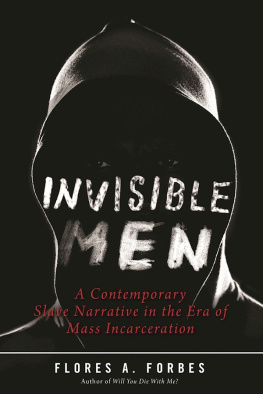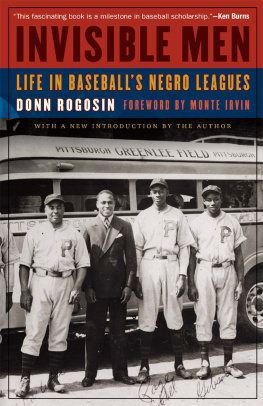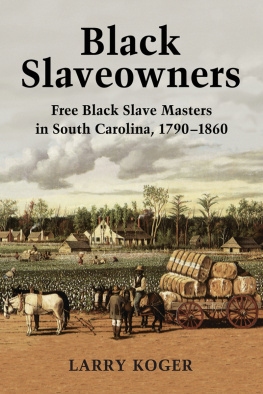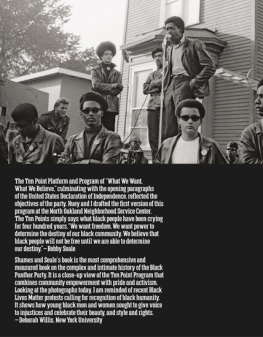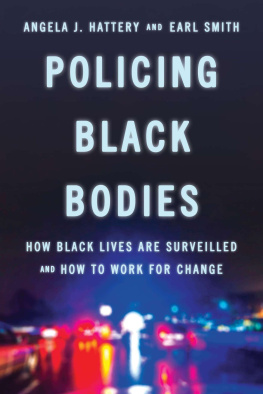Flores A. Forbes - Invisible Men: A Contemporary Slave Narrative in the Era of Mass Incarceration
Here you can read online Flores A. Forbes - Invisible Men: A Contemporary Slave Narrative in the Era of Mass Incarceration full text of the book (entire story) in english for free. Download pdf and epub, get meaning, cover and reviews about this ebook. year: 2016, publisher: Skyhorse, genre: Politics. Description of the work, (preface) as well as reviews are available. Best literature library LitArk.com created for fans of good reading and offers a wide selection of genres:
Romance novel
Science fiction
Adventure
Detective
Science
History
Home and family
Prose
Art
Politics
Computer
Non-fiction
Religion
Business
Children
Humor
Choose a favorite category and find really read worthwhile books. Enjoy immersion in the world of imagination, feel the emotions of the characters or learn something new for yourself, make an fascinating discovery.
- Book:Invisible Men: A Contemporary Slave Narrative in the Era of Mass Incarceration
- Author:
- Publisher:Skyhorse
- Genre:
- Year:2016
- Rating:5 / 5
- Favourites:Add to favourites
- Your mark:
Invisible Men: A Contemporary Slave Narrative in the Era of Mass Incarceration: summary, description and annotation
We offer to read an annotation, description, summary or preface (depends on what the author of the book "Invisible Men: A Contemporary Slave Narrative in the Era of Mass Incarceration" wrote himself). If you haven't found the necessary information about the book — write in the comments, we will try to find it.
Flores Forbes, a former leader in the Black Panther Party, has been free from prison for twenty-five years. Unfortunately that makes him part of a group of black men without constituency who are all but invisible in society. That is, the invisible group of black men in America who have served their time and not gone back to prison.
Today the recidivism rate is around 65%. Almost never mentioned in the media or scholarly attention is the plight of the 35% who dont go back, especially black men. A few of them are hiding in Ivy League schools prison education programsthey dont want to be knownbut most of them are recruited by the one billion dollar industry reentry employee programs that allow the US to profit from their life and labor. Whereas, African Americans consist of only 12% of the population in the US, black males are incarcerated at much higher rates. The chances of these formerly convicted men to succeed after prisonto matriculate as leading members of societyare increasingly slim. The doors are closed to them.
Invisible Men is a book that will crack the code on the stigma of incarceration. When Flores Forbes was released from prison, he made a plan to re-invent himself but found it impossible. His involvement in a plan to kill a witness who was testifying against Huey P. Newton, the founder of the Black Panther Party, had led to his incarceration. While in prison he earned a college degree using a Pell Grant, with hope this would get him on the right track and a chance at a normal life. He was released but thats where his story and most invisible mens stories begin.
This book will weave Flores knowledge, wisdom, and experience with incarceration, sentencing reform, judicial inequity, hiding and re-entry into society, and the issue of increasing struggles and inequality for formerly incarcerated men into a collection of poignant essays that finally give invisible men a voice and face in society.
Flores A. Forbes: author's other books
Who wrote Invisible Men: A Contemporary Slave Narrative in the Era of Mass Incarceration? Find out the surname, the name of the author of the book and a list of all author's works by series.

